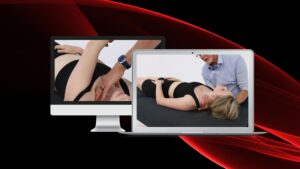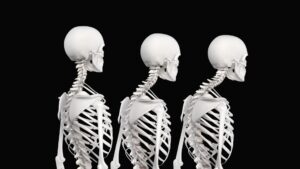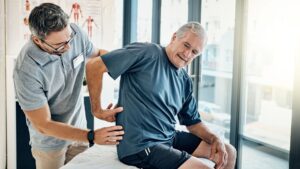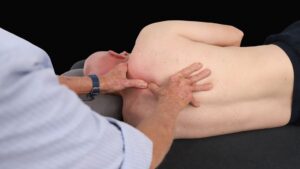Modification Techniques for Tennis Elbow & Nerve Pain

Epicondylalgia
While the humeral and ulnar bones flex and extend similarly to a door hinge, the humeral and radial articulations are much more complex. Shaped like a contoured knob with a cup at the end, the elbow’s radial head smoothly rotates around the ulnar bone, causing the radiohumeral and radioulnar joints to efficiently turn the palm up (supination) or down (pronation) (Image 2. ). Sports and occupations that involve repetitive lifting, forceful forearm maneuvers, and recurrent vibration may, in time, damage the elbow’s extensor tendons and degrade the joint’s articular cartilage. In the presence of altered joint mechanics, the brain may decide to layer the area with a protective spasm, resulting in radial nerve symptoms that resemble lateral epicondylalgia, or tennis elbow. Famed hand surgeon Emanuel Kaplan, MD, was the first to suspect radial nerve denervation as a possible cause for some epicondylalgia cases. In dissection studies, he noted constriction of the radial nerve by adhesions to the capsule of the radiohumeral joint and the short extensor muscle of the wrist1. A study published in the Manual Therapy Journal found that a significant percentage of double-blind subjects presenting with tennis elbow demonstrated a favorable response to articular stretching techniques to restore optimal extension, pronation, and supination.2 A similar study on computer users found an immediate reduction in lateral elbow pain after radial nerve mobilization.3 The researchers concluded that mobilization with movement appears to be a promising alternative treatment for clients with tennis elbow. But why?
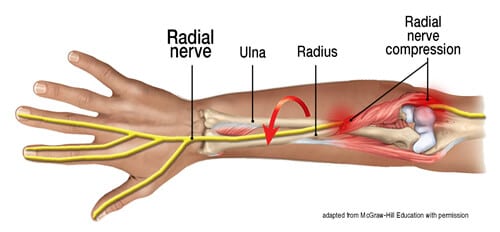
Tendinosis or Nerve Pain?
Most of us who treat athletes are keenly aware that repetitive gripping can strain elbow tendons, leading to palpable maladaptations in the tendon structure. During clinical examination of tennis elbow, clients often report tenderness over the common forearm extensor tendon insertion at the lateral epicondyle. Pain is reproduced with resisted wrist and middle finger extension and with gripping activities. I’ve had some success treating tendinopathies by working the tissues above and below the injury site and then teaching specific eccentric strengthening exercises. In the past few years, I’ve added articular stretching and neural mobilization techniques to calm hyper-excited mechanoreceptors, reduce protective muscle guarding, and remove tension on strained fibers and compressed nerve tunnels. Try incorporating myoskeletal articular stretching techniques such as the ones shown in Images 3, 4, and 5 prior to assessing and treating soft-tissue lesions. If your state laws allow home retraining advice, teach the radial nerve mobilization stretch shown in Image 6. You may find that many chronic elbow and forearm problems soon disappear as full mobility is restored to motion-restricted joints and associated soft tissues.

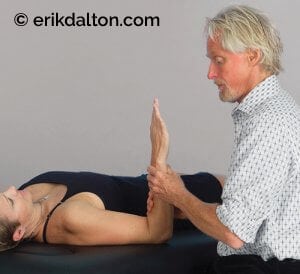

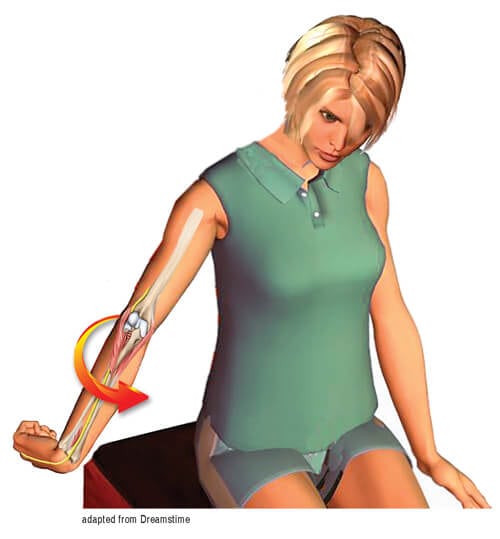
References
- E. B. Kaplan, “Treatment of Tennis Elbow by Denervation,” Journal of Bone and Joint Surgery: American Volume 41, no. A(1) (January 1959): 147–51.
- J. H. Abbott, C. E. Patla, and R. H. Jensen, “The Initial Effects of an Elbow Mobilization with Movement Technique on Grip Strength in Subjects with Lateral Epicondylalgia,” Manual Therapy 6, no. 3 (August 2001): 163–69.
- V. Arumugam, S. Selvam, and J. C. MacDermid, “Radial Nerve Mobilization Reduces Lateral Elbow Pain and Provides Short-Term Relief in Computer Users,” Open Orthopaedics Journal 8 (October 2014): 368–71.







